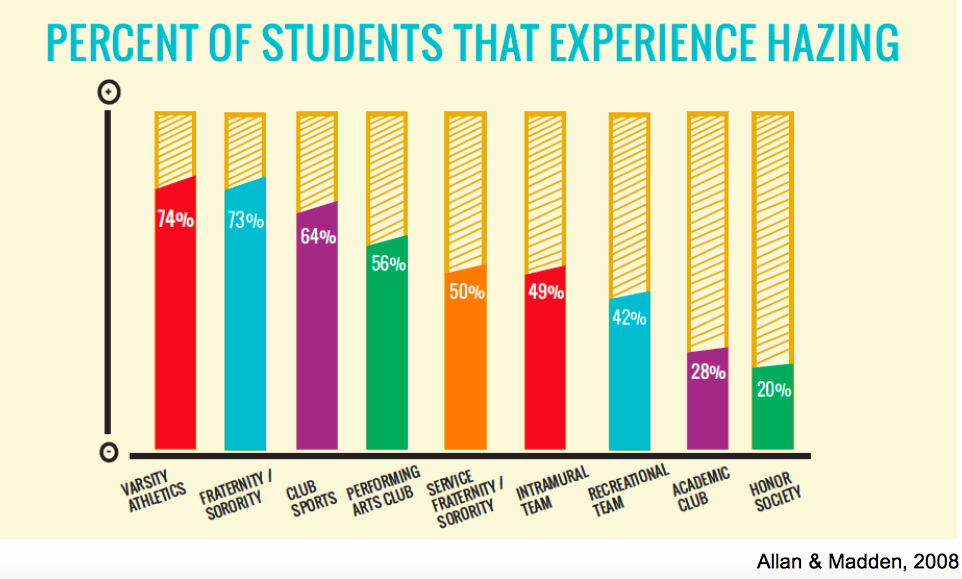“Hazing is any activity expected of someone joining or participating in a group that humiliates, degrades, abuses, or endangers them regardless of a person’s willingness to participate.” (Allan & Madden, 2008).

Consider these key findings from the National Study on Student Hazing (Allan & Madden, 2012; 2008):
-
Approximately half of students in high school (47%) and college (55%) involved in clubs, teams, and organizations report experiencing hazing or activities that meet the definition of hazing.
-
Men (61%) and women (52%) experience hazing on campus.
-
Hazing cuts across racial identities, meaning all students on campus are at risk.
-
Hazing occurs across student groups.
-
Varsity athletic teams (74%) and fraternities and sororities (73%) haze at the highest rates, but they are far from the only domains on campus where hazing is common.
-
Groups such as club sports (64%), performing arts organizations (56%), service organizations (50%), intramural teams (49%), and recreation clubs (42%) all commonly engage in hazing behaviors.
Instances of hazing are often far from innocuous and research suggests that students are participating in high-risk and potentially illegal behaviors to belong to student groups or teams. Troublingly, alcohol use, sexual harassment and assault are commonly used in hazing practices on campuses. And while the physical harm entailed in these forms of hazing is highly visible and problematic, hazing also involves forms of psychological and emotional harm that are not necessarily apparent on the surface and that can be exceptionally complex to treat.
Cite: Clery Center: https://clerycenter.org/initiatives/hazing-project/